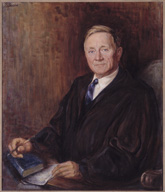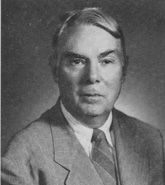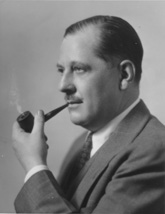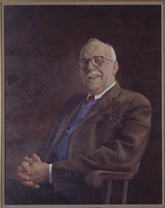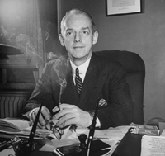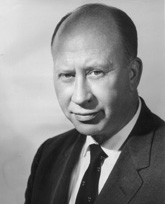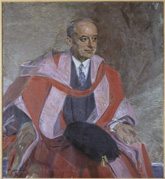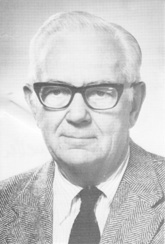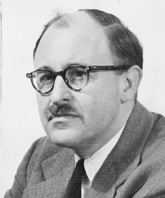Eugene V. Rostow (1913-2002) graduated from Yale College in 1933 and the Law School in 1937, and returned as a professor in 1938. He was the dean of the Law School from 1955-65.
Dean Rostow is perhaps best remembered for his foreign affairs work. He served as an assistant general counsel in the Lend-Lease Administration during World War II, and in 1945 wrote an important article criticizing the internment of Japanese-Americans and calling for reparations, “The Japanese American Cases–A Disaster,” 54 Yale L. J. 489 (1945). Rostow later served as Under Secretary of State for Political Affairs from 1966-69, where he helped to draft U.N. Security Council Resolution 242, which has since provided the basic framework for Arab-Israeli negotiations. He also served as director of the U.S. Arms Control and Disarmament Agency from 1981-83. He published a number of books on international law throughout his career, such as Law, Power and the Pursuit of Peace (1968) and Toward Managed Peace: The National Security Interests of the United States, 1759 to the Present (1993), and the American Bar Association’s standing committee on law and national security presented him with an award for his “extraordinary contributions.”
At the beginning of his career, however, Dean Rostow specialized in the business law area, teaching many business law courses at Yale, including a seminar for graduate students in economics as well as law students, on the public regulation of industry. That seminar introduced macroeconomics - which Rostow had studied at Cambridge University before entering law school - into antitrust law, and focused on the use of public policy to regulate businesses so as to smooth out the business cycle. Rostow also published a number of influential books on business law-related topics, including A National Policy for the Oil Industry (1948) and Planning for Freedom (1959). In these books he expounded a vision of market competition channeled through efficiency-increasing public regulation. His goal, as he put it in Planning for Freedom, was to “fortify and not weaken, the health, vigor, and autonomy of the free institutions of labor…[so as to] minimize the risk of Socialism, Fascism, or other forms of collectivist domination by the state.”
Dean Rostow’s greatest contribution to business law scholarship at Yale, was, however, in the doubling of the faculty size during his deanship, through which he recruited to Yale in the business law area, Merton Bernstein, Joseph Bishop, Robert Bork, Ward Bowman, Marvin Chirelstein, Francis Coker, Bayless Manning, Ellen Peters, John Simon, Harry Wellington, and Ralph Winter. There was also considerable curricular innovation during his deanship, including the creation of the first year small groups. Rostow was one of the great deans of the Law School and had a lasting influence on it. As Dean Anthony Kronman put it in a tribute to Dean Rostow: “[T]his is the school that Gene built, and though it is the work of many hands, of no one can it be said, as fully and truly as it can of Gene, that he gave the place the shape it has, and defined its special spirit.”
Dean Rostow was interviewed in 1984, in a series of recorded interviews of faculty undertaken by the Law School.
REFERENCES:
Guido Calabresi, “The Generosity of a Dean,” 113 Yale L. J. 5 (2003).
Interview with Prof. Eugene V. Rostow, June 7,1984, conducted by Prof. Abraham S. Goldstein (videorecording).
Anthony T. Kronman, “In Memory of Gene Rostow,” 113 Yale L. J. 9 (2003).
Martin Weil, “Eugene Rostow Dies; Law Dean Advised Presidents on Arms,” Wash. Post, Nov. 26, 2002, at B06.

